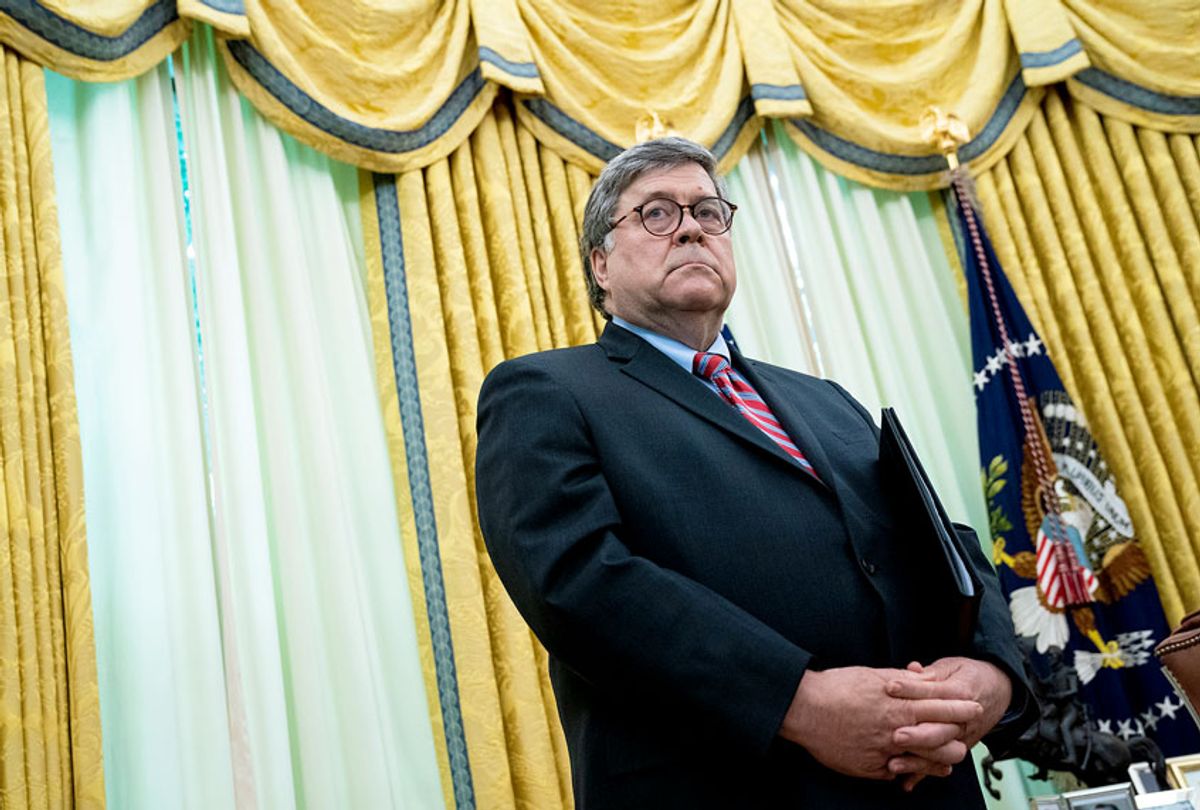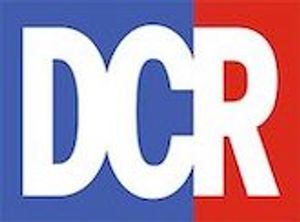At the heart of the upheaval over George Floyd's killing is police accountability.
Do the act, face the consequences — legal, political. ethical.
It's the rewrite of what we grew up hearing about crime — do the crime, do the time.
That's the conundrum of what we've been seeing from the White House, where Donald Trump through Atty. Gen. William P. Barr has been unleashing armed government agents stripped of personal or even agency identity.
The question, obviously, is why? What sense does this make, and what is Barr trying to achieve for the White House other than intimidation of would-be looters and peaceful protesters alike?
From all that has been reported, Barr organized his small army from the Drug Enforcement Administration and the FBI, who did wear identifying information without names, but also officers from the Bureau of Alcohol, Tobacco, Firearms and Explosives (ATF); the U.S. Marshals; and the federal Bureau of Prisons; Homeland Security officers, the Capitol Police, the Federal Protective Service, the Secret Service and the District of Columbia National Guard.
In some cases, they did not include Washington, D.C. metropolitan police.
The imagery of federal troops — or agents that look like federal troops — guarding the steps of the Lincoln Memorial and other public places was strong, which, of course, was the "dominating" force that Trump wanted. It is also strong enough to reflect what we would expect in an authoritarian regime.
A senior Justice Department official was quoted as crediting Barr with the idea of bringing in federal prison corrections officers, calling it an example of Barr's "outside the box" thinking. "He brought those people in," the official said, because dealing with riots is "exactly what they do best."
What about oversight?
Setting aside the operational issues of controlling a force from disparate agencies, this feels a formula for distrust for government. Indeed, there reportedly was confusion in pushing protesters out of the one-block path for Trump to walk to what has become his ill-fated photo op holding a Bible in front of St. John's Episcopal Church.
Barr had to extend a safety perimeter around the White House, and the only way to do it at that moment was to push the protesters out with aerial irritants—the White House says it wasn't tear gas, though others said it was — and physical force. All for a photo that was pretty dumb by itself.
Among the people who think deploying anonymous federal police is wrong is Michael Bromwich, the former inspector general of the Justice Department who oversaw internal investigations, who said anonymity "creates a huge problem" for oversight. "It completely undermines the ability to hold law enforcement personnel who engage in misconduct accountable," said Bromwich. "You've got to know who they are, and certainly which agency they represent."
As it turns out, the Bureau of Prisons, for example, has no internal affairs systems to hold officers accountable.
Six years ago, after the Ferguson, Mo., violence, the Justice Department found that police anonymity was abuse by itself, an act that "conveys a message to community members that, through anonymity, officers may seek to act with impunity."
Christy Lopez, the former Justice Department official who warned Ferguson about the lack of nameplates, said the anonymity of officers on the streets of D.C. was "an indication of how upside-down this administration is."
Congressional moves
House Judiciary Committee Chairman Jerry Nadler ( D-N.Y.) has formally requested information on the various agencies policing protesters in D.C. Sen. Elizabeth Warren (D-Mass.) has asked that the DOJ inspector general investigate Barr's role. Rep. Don Beyer (D-Va.) and Eleanor Holmes Norton, the non-voting representative of Washington, D.C., have a bill to require federal law enforcement officers in uniform to clearly show their names and agencies.
Yesterday, without offering evidence, Barr said that foreign powers may be using the cover of protest to advance their own agendas against the United States. Meanwhile, he continued to mention publicly only abuses from far-left anarchists without mentioning the arrests of far-right groups.
Fear of street violence notwithstanding, our government is creating new fears about the government itself. We clearly now have confusion among military leaders who are resisting Trump's attempts to politicize protests for partisan purposes. We have disagreement at every level of government about curfews and police deployment to protect buildings rather than people.
No, we should not be deploying active U.S. troops against Americans. But we should all agree that we know who is doing the policing.




Shares